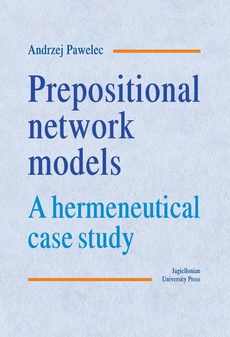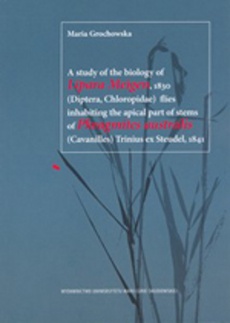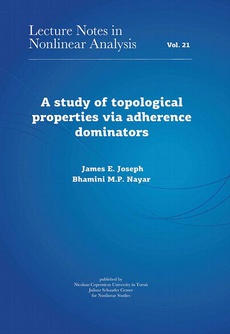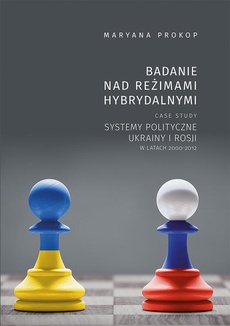POLECAMY
Explicitation in Simultaneous Interpreting. A Study into Explicitating Behaviour of Trainee Interpreters
Autor:
Wydawca:
Format:
pdf, ibuk
Przedmiotem pracy jest zjawisko eksplicytacji w tłumaczeniu symultanicznym. Do niedawna uważano, że eksplicytacja, jako zjawisko często przybierające formę amplifikacji tekstowej, występuje niezwykle rzadko w przekładzie symultanicznym, gdzie ograniczenia czasowe nie pozwalają na tego typu operacje tekstowe. Niedawne badania dowodzą jednak, że eksplicytacja występuje w tłumaczeniu symultanicznym i choć uwarunkowana w dużej mierze ograniczeniami medium, nie jest bynajmniej zjawiskiem marginalnym. Autorka omawia eksplicytację w tłumaczeniu symultanicznym z trzech perspektyw: instrumentalnej, gdzie badany jest aspekt strategiczności i intencjonalności tego typu operacji powierzchniowych, orientacyjnej, gdzie eksplicytacja omawiana jest w kontekście kierunku tłumaczenia tekstu, oraz psycholingwistycznej, w której Autorka bada eksplicytację jako jeden z wykładników stylu kognitywnego tłumacza. Monografia jest adresowana zarówno do przekładoznawców, jak i do językoznawców zainteresowanych tekstowymi aspektami tłumaczenia konferencyjnego.
| Rok wydania | 2017 |
|---|---|
| Liczba stron | 334 |
| Kategoria | Językoznawstwo |
| Wydawca | Uniwersytet Śląski |
| ISBN-13 | 978-83-226-3349-6 |
| Numer wydania | 1 |
| Język publikacji | angielski |
| Informacja o sprzedawcy | ePWN sp. z o.o. |
Ciekawe propozycje
Spis treści
| Contents | |
| List of abbreviations / | 9 |
| Introduction / | 11 |
| PART ONE Theoretical background and research methodology | |
| Chapter 1. Explicitation / | 19 |
| 1.1 Defining explicitation / | 20 |
| 1.1.1 Definitions of explicitation in previous research / | 20 |
| 1.1.2 Language independence of explicitation / | 23 |
| 1.1.3 Explicitation versus addition, amplification, and overtranslation / | 28 |
| 1.1.4 Explicitness and implicitness / | 32 |
| 1.2 Taxonomies of explicitation / | 38 |
| 1.2.1 Séguinot’s addition and specification / | 38 |
| 1.2.2 Klaudy’s causal typology / | 39 |
| 1.2.3 Vehmas-Lehto’s category of over-explicitation / | 42 |
| 1.2.4 Klaudy and Károly’s transfer operations / | 43 |
| 1.2.5 Perego’s types and forms of explicitation / | 45 |
| 1.2.6 Kamenická’s and Hopkinson’s functional classifications / | 47 |
| 1.2.7 Pápai’s explicitation strategies / | 50 |
| 1.2.8 Murtisari’s scalar and categorical explicitation / | 51 |
| 1.3 Research methods and frameworks / | 52 |
| 1.4 Causes of explicitation / | 57 |
| 1.5 Explicitation as a translation universal / | 63 |
| Chapter 2. Explicitation and its surface manifestations / | 66 |
| 2.1 Adding connectives / | 70 |
| 2.2 Intensifying cohesive ties / | 74 |
| 2.3 Lexicalisation of pro-forms / | 75 |
| 2.4 Reiteration / | 77 |
| 2.5 Filling out elliptical constructions / | 79 |
| 2.6 Adding modifiers and qualifiers / | 81 |
| 2.7 Inserting hedges and discourse organising items / | 83 |
| 2.8 Explicitating shifts involving proper names / | 84 |
| 2.9 Including additional explanatory remarks and providing full forms for | |
| abbreviations / | 87 |
| 2.10 Replacing nominalisations with verb phrases / | 90 |
| 2.11 Disambiguating lexical metaphors / | 94 |
| 2.12 Lexical specification / | 96 |
| 2.13 Meaning specification / | 98 |
| Chapter 3. Research methodology / | 99 |
| 3.1 Aims and research questions / | 99 |
| 3.2 Research design / | 101 |
| 3.2.1 Method / | 101 |
| 3.2.2 Participants / | 105 |
| 3.2.3 Corpus / | 106 |
| 3.2.4 The experimental procedure / | 108 |
| 3.3 Taxonomy of surface manifestations of explicitation / | 111 |
| 3.4 Conceptual framework / | 114 |
| 3.4.1 The Time Constraint / | 117 |
| 3.4.2 The Linearity Constraint / | 125 |
| 3.4.3 The (Un)shared Knowledge Constraint / | 132 |
| 3.4.4 The Memory Load Constraint / | 136 |
| PART TWO Analysis | |
| Chapter 4. Explicitation and strategy / | 143 |
| 4.1 Working definition of strategy in simultaneous interpreting / | 143 |
| 4.2 Previous research / | 145 |
| 4.3 Analysis / | 146 |
| 4.3.1 Adding connectives / | 154 |
| 4.3.2 Intensifying cohesive ties / | 159 |
| 4.3.3 Lexicalisation of pro-forms / | 161 |
| 4.3.4 Reiteration / | 165 |
| 4.3.5 Filling out elliptical constructions / | 174 |
| 4.3.6 Adding modifiers and qualifiers / | 177 |
| 4.3.7 Inserting hedges and discourse organising items / | 184 |
| 4.3.8 Shifts involving proper names and abbreviations / | 187 |
| 4.3.9 Including additional explanatory remarks / | 195 |
| 4.3.10 Replacing nominalisations with verb phrases / | 199 |
| 4.3.11 Disambiguating lexical metaphors / | 202 |
| 4.3.12 Lexical specification / | 205 |
| 4.3.13 Meaning specification / | 211 |
| Chapter 5. Explicitation and directionality / | 220 |
| 5.1 Directionality in interpreting / | 220 |
| 5.2 The pilot study / | 224 |
| 5.3 Analysis / | 227 |
| 5.3.1 Adding connectives / | 230 |
| 5.3.2 Reiteration / | 232 |
| 5.3.3 Adding modifiers and qualifiers / | 236 |
| 5.3.4 Disambiguating lexical metaphors / | 239 |
| 5.3.5 Meaning specification / | 240 |
| 5.4 Correlation with the results of the survey on directionality / | 243 |
| Chapter 6. Explicitation and interpreting style / | 252 |
| 6.1 Translator and interpreter style / | 252 |
| 6.2 Relating explicitation to translator and interpreter style / | 255 |
| 6.3 Analysing interpreter explicitating style – methodological considerations / | 257 |
| 6.4 Analysis / | 260 |
| 6.4.1 Frequency / | 260 |
| 6.4.2 Consistency / | 263 |
| 6.4.3 Distinctiveness / | 270 |
| Conclusions / | 281 |
| Appendices | |
| Appendix 1: The frequency of explicitating shifts for each of the 120 participants / | 285 |
| Appendix 2: Surface forms of all shifts (reported and unreported) / | 288 |
| Appendix 3: Surface forms of reported shifts / | 294 |
| Appendix 4: The number of all retrospective comments verbalised by the | |
| participants / | 300 |
| Appendix 5: Reasons for explicitation reported by the participants in retrospective | |
| protocols / | 304 |
| References / | 305 |
| Streszczenie / | 325 |
| Resumen / | 329 |

























